Impact of Malfunctioning and Negligence of Safety Regulations on Labour in Indian Construction
Abstract
The main aim of this thesis is to identify the causes of malfunctioning and negligence of safety practices at construction sector in India. To fulfill this aim, an investigation with the use of existing data is conducted to analyse the impact of malfunctioning and negligence of safety practices on labour and their conditions.
Along with this, ways to improve the safety regulations of labour are evaluated. For this, research methods such as deductive approach, mixed method research design, secondary research strategy combines with review of literature and secondary data collection methods and content analysis method for data analysis are used by the researcher to collect the research data to answer the research questions.
At the same time, the secondary method allowed to collect strategies to deal with labour consequences in the construction sector in India.
The findings of this research put forward that poor understanding of safety procedures/ protocols, inefficient safety training from the organization side, avoiding the safety rules from labor side and work time and production pressure are the key causes for the failure and negligence of safety regulations in the construction environment in India. In this way, due to the negligence of safety regulations, several impacts on labour are identified such as low performance, and productivity, absenteeism from work, health and safety aspects, low employee morale, etc. It is also found that there are several ways that can be helpful to overcome these issues. In the end, it can be concluded that safety regulations are neglected within the construction companies of India. In addition, it is recommended to the construction companies that they need to provide sufficient resources for education and training program related to safety and health and improving the site condition with warning system, workspace arrangement and sufficient PPE for every worker so that they can be kept safe at the construction sites. In this research, the limitation is that this research is based only on secondary research method and approach which limits the understanding of the research questions to a certain extent.
In the businesses, it is important for the firms to consider the risks involved at workplace to ensure the safety of the employees. Apart from this, it is crucial for the organizations to keep safe workplace for the firms. For this, firms focus on safety regulations to ensure the safety of employees at workplace and avoid any legal and ethical issues (Hasan and Jha, 2013). In context of construction industry, it is unique among all other sectors because it is effective to provide necessary infrastructures to stimulate economic development. At the same time, India’s workforce is attributed to the construction industry in large volume. Construction industry is labour intensive that demands effective safety work practices. This industry demand more human development due to more hard work and human involvement at the construction site. The increasing casualty in building projects makes this industry dangerous and highly hazardous (Mouleeswaran, 2014). But, it is mandatory for the construction firms to ensure the safety regulations at workplace due to possibilities of the high risks and uncertainties at construction sites. However, the safety regulations are present for the safety of the workers at the construction sites (Shamsuddin et al., 2015). But at the same time, these regulations are neglected and malfunctioned that caused a big threat to the safety of the labour at the construction sites. So, it is important for the construction firms to consider the proper execution of the safety regulations at the sites (Zahoor et al., 2016). In relation to this, the undertaken research is based on the impact of the malfunctioning and negligence of safety regulations on labour in Indian construction.
In developing countries like India, the accidents at construction sites remained an ongoing concern although the presence of the safety practices over the decades. Safety practices are considered to guide the workers to carry out the tasks with safety to reduce the accidental losses and injuries. The increasing cases of casualties and illnesses reported on construction sites in India also raise the questions on the existing regulatory framework and standards for construction projects. Thus, proactive step needs to be taken to identify the causes behind the improper working of the safety regulation framework at construction sites (Doloi et al., 2012). This study focused on the causes related to malfunctioning and negligence of the safety regulations in Indian construction and its impact on the labour. At the same time, this study helped to suggest the strategies to ensure the safety of the labour in construction industry.
The research acts as a shell that can improvise the lifestyle of the labour at work. The research peeps into lots of loopholes of the working system and enhances to practice new methods that will help to develop the safety standards. The importance of preventing the life of labour can save lot of economy by the means of understanding that neglecting the safety regulations can end up in financial, time and resource loss. This is because neglecting safety can result in accidents, sudden breakdown of structures and delays in the planning and scheduled timelines. Bringing down the uncertainty and accidents percentage can be achieved up to some extent. The other incentives that will be automatically be coming with the research are the new methodologies, techniques, awareness among the organisations, importance of labour safety, degree of safety and the existing culture of safety practices.
- What are the reasons behind the malfunctioning and negligence from the organizations and the system towards the labour?
- What are the consequences the labour is experiencing from these impacts?
- What strategies can be applied to ensure the safety of labour?
The aim of the research is to identify how the negligence and malfunctioning in safety regulations in construction industry is affecting the life of labour. In order to achieve this aim, the following research objectives are accomplished throughout the study:
- To identify the causes of malfunctioning and negligence of safety practices in organisations.
- To identify the impact of malfunctioning and negligence on labour.
- To identify the strategies that can be applied to improve the safety regulations of labour.
This study is based on the determination of the impact of the malfunctioning and negligence of the safety regulations in Indian construction. So for this study, a mixed approach (quantitative and qualitative) approach is taken into consideration as the research involves the already existing data as a reference. For this, a desk research method is used to collect the secondary data and information and analyze it through content analysis method (Choy, 2014). This method helped to develop better understanding of the topic. This method has been chosen over the other procedures because of the understanding of information from different perspectives that it presents with previous and existing contributions. It gives a better picture of understanding the research topic. Thus, the data collected for the existing information gives an opportunity to understand the existing safety regulations, safety culture, practices and existing scenarios of the construction environment. This secondary data helps in defining the existing situation and but also provides a platform to rethink whether the current practices in the construction field are adequate or require slight or drastic changes to the existing system for a better result and outcome for the employer and the workers/labours. The secondary method adopted here fulfils the required information about the present situation to improve the labour safety in the construction environment.
Thesis structure is categorized into six chapters as below:
Chapter 1: Introduction
In this chapter, research background and problem statement is discussed to develop understanding of the topic. At the same time, aim and objectives with research methodology are also discussed in brief for further conducting the study.
Chapter 2: Literature Review
This chapter provides the theoretical understanding of the topic through review of the literature on the research topic. It is helpful to develop theories and concepts related to the research issue and use this knowledge to conduct the study appropriately. It also indentifies the literature gap to conduct the further study.
Chapter 3: Research Methodology
This chapter provides the understanding of the research methods and techniques that can be used to collect the appropriate data and conduct the study effectively. This chapter also provides the information regarding the research considerations, data collection methods and sampling method to achieve the research objectives properly.
Chapter 4: Data analysis and Findings
This chapter provides the analysis of the data collected and related findings. In this chapter, the data is presented in table and figures to understand the findings and draw meaningful information.
Chapter 5: Discussion
This chapter provides discussion on the findings to achieve the research objectives.
Chapter 6: Conclusion
This chapter provides conclusive statements based on findings of the study and also suggests the recommendations to solve the research issue along with the research implications for future researches.
While discussing the importance of this chapter, it is determined that literature review is beneficial for the researcher while conducting the evaluation of the essential theories and concepts. In this way, it is also determined that these theories and concepts are helpful to enhance the strength of the understanding in concern about the problem of the research. At the same time, this chapter is also helpful to enhance the conceptual understanding of the research which is essential to grow the knowledge about the topic of the research study. On the other side, this chapter also helps to determine the secondary research that is important for more reliable and accurate information.
2.2 Reasons of malfunctioning and negligence of safety practices in organizations
In the words of Rajkumar (2017), it is determined that in the present world, it can be seen easily that number of the organization who perform their operations only for earning profit and success within this competitive market. They have focused only on their production and marketing of their brand and at the same time, they forget about the safety and health of their workforce at the workplace. In the same manner, Nagarajan and Shrieff (2017) mention that on the construction sites, there is essential for the employer to follow all the safety rules and regulation while performing the tasks by the labours. But because of a number of reasons, several organizations neglect the safety regulation at the construction sites that create a negative impact on the labours. In this manner, Hakim and Moamen (2018) define within his research study that constructions companies try to avoid safety rules and regulation because of the complexity in safety rules that make the difficult to follow the safety rules at construction sites. In India, safety regulations are quite complex that is why every organization cannot follow these kinds of rules and regulations while performing their operations. Under the Indian safety regulations, there are several terms that are not easy to follow by small construction firms at their construction sites. On other side, Swuste et al. (2016) put forward limited use of personal protective equipment and poor knowhow of safety procedures are the main points to consider at the construction sites due to which a number of accidents take place. Under this, carelessness of the company can easily be seen in concern of labor and workers. In a similar manner, Swuste et al. (2016) also depicted that insufficient safety training and safety equipment are also one of the major reasons that is why workers are unable to follow safety rules and regulation while accomplishing the construction work at the sites. In order to support, the production pressure and absent of safety culture are also mentioned as the reasons by Nagarajan and Shrieff (2017) as why it is not easy to follow safety regulations because labor does not have time to consider safety rules under the construction.
In a similar manner, there is another reason such as relaxation and easiness that is why companies motivate to not follow the safety regulations at their construction sites. In this concern, Xu (2018) reveals that due to the lack of an audit system, organizations do not have any kind of pressure to follow the safety regulations that are already complex for them. This lack of audit system provides the relaxation to the construction companies in their construction work and in this manner, companies in construction industry accomplish the projects as per their terms and conditions that are completely in favour of company not in favour of labours. At the same time, Swuste et al. (2016) reflect that cost can also be a reason due to which organizations neglect to follow the safety rules and regulations at their construction sites. As it is cleared that while following the safety rules and regulations at the construction sites, companies have to wear several costs to make the construction sites safe and secure completely in the context of labours that is why companies neglect the safety regulations at the construction sites.
2.3 Impact of malfunctioning and negligence of safety regulations on labour
In concern of safety regulations, Phipps and Prieto (2016) depict in his research study that there can be several impacts if organizations neglect the safety regulations at the construction sites. These impacts mainly affect the labours at the contraction sites in India. In this way, one of the major impacts is increasing ratio of accidents at the sites. Due to this, numbers of workers have to face injuries and they have to face health problems. At the same time, Almond and Gray (2017) mention that because of increasing accidents at the construction sites impacts the work as well as the performance of labors. In the organization, labors fail to meet their performance targets because of continuous accidents at the construction sites.
In addition, Pillay (2017) defines that the absenteeism is another impact of malfunctioning and negligence of safety regulations at the construction sites in the context of labors. When the organizations avoid following rules and regulations of safety, that time, mis-happening increases and more accidents take place at the contraction sites so labors avoid going on work because of the harness of work. In the same manner, Cochrane and Tamiru (2016) reflect that because of absenteeism, the productivity of the construction organization is impacted. In this way, organizations are unable to complete the construction on time that creates the negative image of the company in front of customers that is not good for the company’s growth. In addition to this, Rajkumar (2017) reflects that by not considering safety rules and regulations at the construction sites in concern of labor, the productivity of labor decreases due to which, organizations have to face the problems in their supplies. In the same way, due to less productivity, construction takes time and the projects are not completed on time which increases the owner’s as well as their client’s anxiety.
Apart from above, Handford et al., (2016) also describe that when the organization’s malfunction and neglect the safety rules, then hazards happen on a continuous basis which decreases the worker’s morale as well as their motivation level. In this manner, labors feel unsecured at the construction sites and these things impact their productivity very badly. At the same time, they try to avoid performing the organizational tasks completely. In support of this, Hewamanne (2017) illustrates in his study that due to these increasing hazards and risks, employee’s turnover increases within the organization. In this way, this directly impacts the organizational revenue as well as its profitability. Organizations have to hire new workers that increases the organization’s hiring costs as this includes hiring expenses, training expenses, lost sales, and productivity. Moreover, Jilcha et al., (2016) state that high employee’s turnover leads the low workplace morale and deteriorating the product or services quality which is important for an organization in respect to make its customers base and increasing profitability. This happens because of disruption of daily operations due to a low number of employees. Alkhaldi et al., (2017) define in his words that higher employee’s turnover also reduces the marketing return on organization’s investments. While having high turnover, organizations focus on hiring new employees and they increase their expenses to hire new workers that lead the low return on investment in the organization.
2.4 Ways to improve the labour safety regulations
On the basis of above-mentioned impacts of negligence and malfunctioning, Nagarajan and Shrieff (2017) define that if companies avoid following rules and regulations of safety, the company, as well as employee both, have to face a number of issues at the workplace. So, it is essential for the companies to follow all the safety regulations so that negative impacts can be overcome and the advantages related to safety regulations can be taken by the organizations as well as their employees. In this way, companies can establish a health and safety team at the site that can be helpful at the time of any kinds of accident or mis-happening. This is the best way to reduce the negative impact of negligence and malfunctioning at the construction sites. In the support of this, Almond and Gray (2017) mention that with the help of health and safety team, the probability of accidents and disasters can be reduced to a larger extent as health and safety team provides the guidance to the workers that how to do work with more efficiency. In addition, Xu (2018) describes within its research that weekly inspection can also be helpful for the company as well as its employees because by conducting a weekly inspection, it can be ensured that all the safety rules and regulations are followed at the construction sites. Along with this, it can also be made sure that employees are working within a safe and healthy environment. At the same time, Rajkumar (2017) states that if the construction companies improve their site’s conditions, then employees can be saved from the disasters that can happen at the construction sites without following appropriate safety rules and regulations. Apart from this, Cochrane and Tamiru (2016) illustrate that strict action of the company on safety standard non-compliance/ violation can be helpful to establish a safety and healthy environment at the construction sites. Due to the strict actions of the safety management, it is made sure that employees, as well as employer, have to follow all the safety rules and regulation at construction sites. In the end, Pillay (2017) supports that companies can organize training and development program at the construction sites as on-the-job training as well as off the job training to provide appropriate safety and health-related training to their workers so that they can be safe from several mis-happenings at the sites while accomplishing the typical tasks. In this way, effective training before starting the task may be helpful for the workers or labours to stay healthy and safe at the construction sites. In a similar manner, with the help of training programs, employees can be motivated to follow all the safety rules and regulations.
After accomplishing the discussion based on the real facts, it can be summarised that safety rules and regulations play an important role at the construction sites in concern of labors/ workers who work on the construction projects in which have high chances of safety disasters and accidents. In this way, there are several questions that take place under this chapter and these questions should be addressed through conducting an interview and survey questionnaire. This is because that negligence and malfunctioning of safety regulations create several issues in front of construction companies and their employees. In this way, it is found that negligence of safety regulations have a deeper impact over the companies as they have to bear losses related to work as well as profitability. If the companies focus on the ways to maintain the safety rules and regulation at the construction sites, then the disasters can be reduced to a larger extent.
Chapter 3: Research Methodology
This section introduces and provides an explanation of the research methodology which was used to initiate and complete the research process in a systematic and efficient manner. The section explains and justifies the selection of the research tools and techniques that were employed for the sourcing and collection of the research data, and the method of analysis and interpretation to achieve the research aim and objectives. The chapter includes the research approach, design, strategy, data collection method, and data analysis method followed by the researcher.
Research approach: The researcher has chosen the deductive approach over inductive approach to provide justification for the quantitative vs. qualitative data collection and data analysis. The deductive approach has been useful to explore the known facts to provide logic to the existing premises (McNabb, 2015). Thus, the reasoning initiated from general towards specific observations and was effective to seek explanation for the impact of malfunction and negligence of labour safety regulations on labour in the construction sector in the context of India. The deductive approach also favoured the use of quantitative methodology for this investigation.
Research design: The method research design was chosen over qualitative and quantitative research design to shape the process of research in the direction of fact based and logical investigation and to undertake research in less time and economical way (Choy, 2014). It was preferred as considering the measurable nature of research which required the researcher to collect and analyze the numerical data under the quantitative design and also provide in-depth understanding of the research problem. According to Creswell (2013), to fulfill the data requirement of statistical data the quantitative design is ideal to obtain data through data obtained through questionnaire, polls, survey, etc. The use of qualitative research design was also preferred as it place high relevance to provide the information about the attitudes, views and feelings of the employer and employee in the construction sector to understand human feelings and behavioral aspects. On the other hand, the quantitative research design allowed the researcher to assume reasoning from broad to specific perspectives (Creswell and Creswell, 2017). Thus, it can be stated that this mixed method research design was useful in understanding and developing the link among the known fact and the observations and also underrating the behavioral aspects of workers with the use of both design techniques and to analyze the fin depth and actual knowledge factors to generate reliable outcomes.
Research method and strategy:
The strategy for method of investigation includes literature review to gain more theoretical understanding about the research topic. This was helpful in development of research framework and evidences and ideas gained from the literature were analysed using the research strategy survey. Thus, to develop the link among the research theory and the research data, the secondary research strategy was chosen for this investigation to find answer to the research questions. According to Gray (2013), the secondary research forms a strong research strategy for qualitative information in an investigation approach. This research strategy has been chosen as it allows flexibility in gathering data and use of existing information which have been gathered by other or different purpose or similar purpose through primary research.
To fulfill the data requirements of the investigation the researcher has chosen secondary methods of data collection. The secondary method placed high relevance for the research to source and collects the already existing data to find answer to the research question by the use of other market researcher’s data and information gathered by them via primary sources use and other published information on the internet. The data was collected from internet, online available research articles, journal and other market research and websites about the construction industry for reasons for site accidents, labour safety regulation in construction sites, related impact on labour and strategy to deal with this problem situation. Thus, secondary data collection method was preferred to meet the data requirements of existing information (Creswell, 2013). At the same time, the existing data and information was gathered to review the literature which presented the existing information on the investigation areas and in the form of other researchers’ findings and arguments. The data source for secondary data collection for review of literature includes the use of journal, articles, market researches, and text books and eBooks. The secondary data collection was preferred to develop a more theoretical understanding of the investigation area and to support and correlated the existing literature reviewed with the secondary findings to increase the reliability aspect of the research inferences/ results (Gray, 2013). Thus, the secondary data collection method largely contributed in the research to elevate the topic understanding and knowledge development.
The data analysis forms the most important and crucial step in the research process to undertake a systematic evaluation of the collected research data to interpret and gain meaningful information that was useful to address the research question. The collected data gains its significance when it was properly analysed to increase its reliability for the research outcomes (Goodwin, 2012). The secondary research method facilitated collection of research data (Lietz, 2010) which was analysed using the content analysis for each research question. This was useful in analysing the reason for the negligence/ malfunction of safety regulation and labour condition/ life and in determining the impact of safety regulation of these on the labour to a great extent in a systematic and logical manner. The content data analysis has been useful in making valid inferences by the adequate interpretation of the text information and graphical information. Content analysis helped in evaluating the chart and graphs and the textual information within to gain relevancy towards the results and inferences.
This chapter covered the deductive approach, mixed methods research design and methodology, and secondary research strategy which has been combined with review of literature research approach or the method of investigation adopted by the researcher for this research. It is also explained about the use of secondary method of data collection to collect the existing information from the use of secondary sources and to analyse the collected secondary data with the use of content analysis method to make reliable and valid inferences.
Chapter 4: Data Analysis and Findings
The analysis of the collected secondary data and results obtained are presented in this section. The section highlights and states the key secondary findings in form of charts, tables and graphs related to the research questions. The researcher analysed the secondary data findings from other countries and India to provide details on the impact of safety regulation failure and negligence on the labour and other countries strategies to deal with the consequences on labour. The secondary data findings were studied to find any correlation with the existing literature.
Overview of Construction Industry
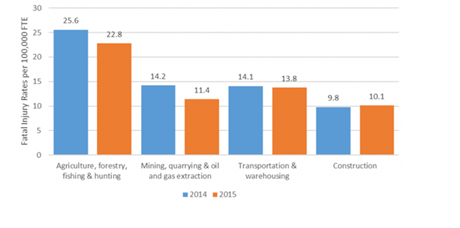
Figure 1: Fatal injury rate by industry wise in 2014-2015 (Jones, 2016)
The above figure highlights that among other industries the construction sector fatal injury rate is low. At the same time, it is also indicating that there is rise in the fatal injury rate.

Figure 2: Construction fatal accidents by state (Patel and Jha, 2015)
The above figure provides a clear indication of no. of fatal accidents in India on a state wise basis in the construction industry which is high in all the states as compared to the cement consumption. This has high consequences on the Indian labour in terms of on-the job injury, heath risks and loss of job.
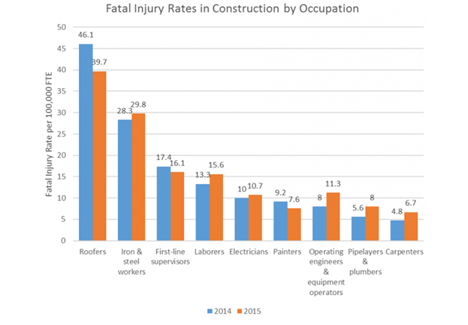
Figure 3 : Construction fatalities rate by different occupation (Jones, 2016)
The above figure provides a clear picture of the fatal injury rate of the different occupation in the construction industry. It is analysed that labours working of roofing, with iron and steel works, first line supervising job and general work labourers and equipment operators has high risk in their occupation as they have reported high rate of fatal injuries. Thus, these occupations need more attention of the employers towards safety regulation to lower the consequences on these labours.

Figure 4: Death and its cause in the Indian construction industry (KEC, 2014)
From the above figure, it can be analysed that the falls is a major cause of fatalities in this industry and followed by electrocution which can be due to open wires in the construction sites.
4.1 Reason for malfunctioning and negligence of labour safety practices
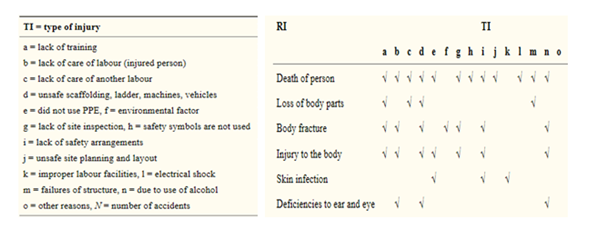
Figure 5: Reason behind workplace injury/accidents in the construction sites (Kanchana et al., 2015)
From the above figure, it can be analysed that there are multiple reasons for the failure of labour safety in the Indian construction sector. The major reason is unsafe practices followed by the labours which are leading to unsafe scaffolding, ladder, vehicles and machine use and consequences like body injury, fracture, loss of body parts, eye and ear deficiencies and loss of life. Also, the lack of training, lack of proper care received to injured labour, lack of safety arrangements, use/consumption of alcohol by labours in the construction site are other reasons that are indicated to be the underlying reasons for the failure of the labour safety regulations.
| Reasons for not following guideline | Details |
| High Cost of safety Implementation and monitoring | High cost of hiring professionals
Less capital to afford personal protective equipment – less or no use of personal protective equipment (PPE) |
| Workers are not well –educated | Less understanding of safety procedures/protocols and the risk to their lives due to lack of safety practices. |
| Worker negligence/ carelessness | After making aware and educating about the physical and other health risk, workers do not follow the safety practices
Not following given safety rules/procedures/ protocols Consider safety practices hindrance to speed and work. |
| Lack of Implementation of Legislation | Lack/ poor of monitoring for the implementation of safety standards laws set up by the government
Corruption makes the implementation difficult Lack of awareness of worker of their safety and health rights to fight for its violation |
| Negligence of the site engineer | Less priority/seriousness towards safety
Lack of efforts for following of the construction site safety plan Lenient with contractor/ subcontractor and workers who do not following the safety rules and procedure. |
Table 1: Reasons behind workplace accidents (Shah et al., 2017)
On the behalf of above figure, it can be identified and analysed that cost form a underlying reason for the negligence of the safety regulations that is why companies find themselves unable to follow or monitor the safety rules and regulations at the construction sites. At the same time, the major reason involving the both the site supervisor/ engineer and labour themselves for the negligence of the labour safety regulation in the Indian construction industry.
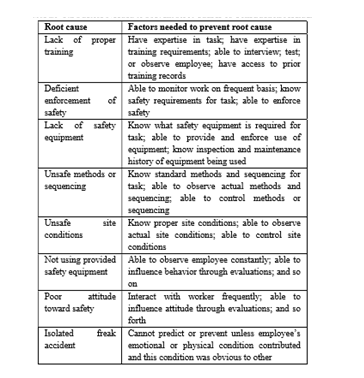
Figure 6: Root cause and factors for construction accidents (Bhole, 2016)
From the above figure, it can be analysed that theses causes are indirectly or directly affecting the implementation of safety regulation of labour and causing its malfunctioning and negligence in the construction industry. At the same time, the figure highlights the factors that required to be avoided to ensure positive consequences for the labour from construction accidents/injuries arising due to negligence of the safety regulations/ protocols.
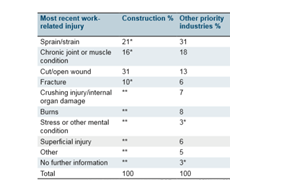
Figure 7: Physical health risk to construction labours (Safe Work Australia, 2015)
From the above information in the figure, it is analysed that the force of safety regulations failure and non-compliance is direct on the labour health aspects which is causing injury and muscular problems like sprain, muscle stress, joint and muscle problems considering the increase in workplace injury and accidents that challenges the labour health and safety standards domain in the work site.
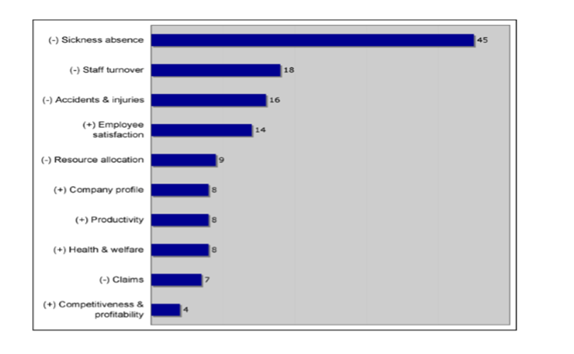
Figure 8: Impact on the site worker from promotion of health programme (Hesapro, 2013)
The above figure highlight the positive effect (+) and the negative effects (-) which are related to the attributed to workplace health promotion for considering 55 case studied. The high impact of majority of case studies have been observed in sickness absence which has negative effect for the employer if it takes place while there is also impact on the employee satisfaction and productivity which have positive effects for the employer. It can be analysed that the both the effects provide benefits for the company in terms of less absenteeism and turnover, less site accidents and injuries, less claims, more profitability for the employer and increase in productivity, labour satisfaction and health and welfare for the workers. It can be analysed that safety regulations are the important concept that influences the labour absenteeism, accidents and claims, satisfaction and productivity at the work sites.
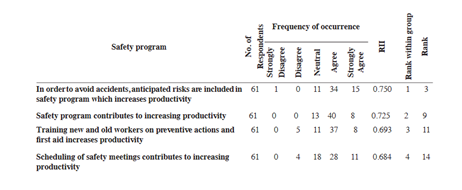
Figure 9: Safety program and impact on productivity (Enshassi et al., 2009)
From the above figure, the impact of safety regulation program on the productivity is highlighted. It is analysed that the safety program includes the anticipated risk which increases the labour productivity. Also, it is analysed that safety program is closely linked to the labour productivity.
4.3 Strategies to ensure safety regulation to improve labour safety

Figure 10: Factors for labour productivity and safety (Enshassi et al., 2009)
From the information given in the above figure, the strategies to resolve the non-compliance and negligence of labour safety regulation can be identified. From the rank 1, factor to improve the labour safety the skilfulness of worker and work demonstration are emphasised which can bring into light the role and effectiveness of training and education program to deal with labour safety regulation implementation and adherence in the Indian construction industry. Thus, the finding reveals that in construction sector that training/ education program will be effective to deal with labour safety regulation in the Indian construction environment.
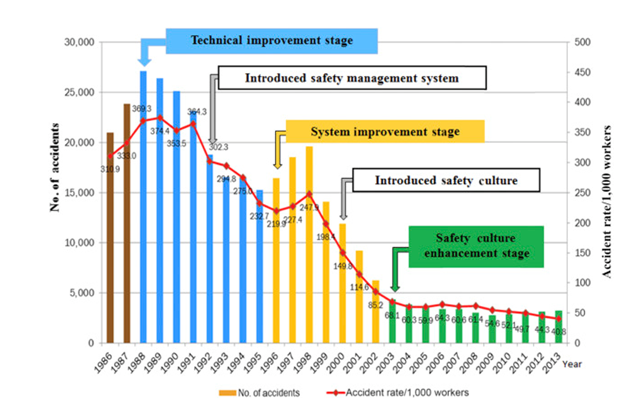
Figure 11: Labour safety and lower no. of accidents rates (Kim et al., 2016)
From the above figure, it can be analysed that the initiating from technical improvements to introduction of safety management system to bring improvements at the level of system has gradually led to the beginning of the safety culture. Thus, developing a safety culture has positive outcome in terms of reducing the no. of accidents over the years and also lowered the accident rate of workers.
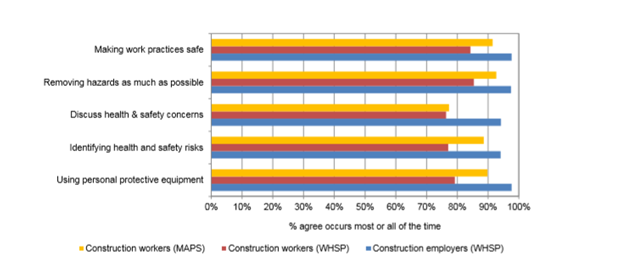
Figure 12: Safety practices for construction workers in Australia (Safe Work Australia, 2015)
From the above figure, it can be analysed that improving the site conditions by removing hazards, making work practices safe, use of personal protective equipment (PPE), and identification of health and safety risk have received agreement from both employers and majority of the workers in the construction sector. From this finding, it can be analysed that inspection, PPE use and arrangement, risk assessment of work practices and hazard identification are strategies that are indicated to ensure labour safety and compliance with the labour safety regulations.
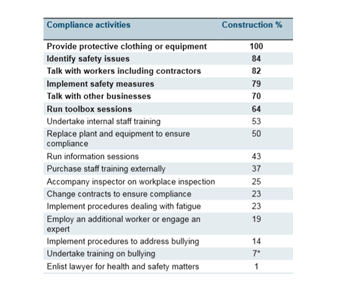
Figure 13: Activities for compliance of safety regulation in construction industry in Australia (Safe Work Australia, 2015)
From the above figure, it is indicated that providing PPE equipment and clothing is major activity to ensure compliance of safety regulation which is carried out by businesses on a 100 percent. This is followed by identification of safety issues, discussion with workers and contractors, implementation of safety measures as the key activities taken to ensure compliance.
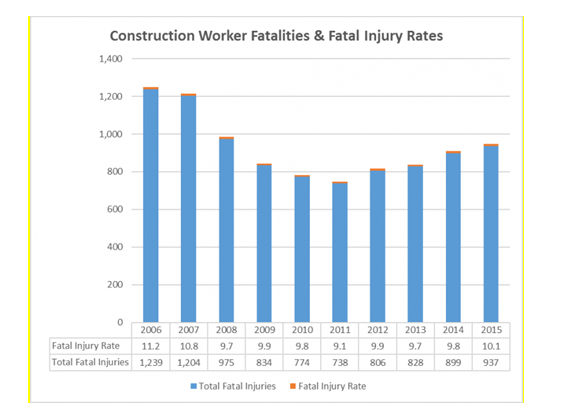
Figure: Construction worker fatalities and fatal injury rates (Jones, 2016)
On the basis of the above figure, it is identified that the injury rates were reduced in the year 2010 and 2011. In addition, this image is also showing that the total injury rate has been decreased till 2015. In concern to the global market, the International Labour Organization (ILO) has adopted more than 40 standards which deal with the issues in occupational safety and health. These standards are providing the great result to solve the safety and health issues identified in Indian construction. There are several construction practices that are using by an Indian construction firm to improve construction site safety like, awareness, training, communication, documentation, proper equipment, supervision, innovation, and transparency.
At the same time, the construction firms in India are using high technology as a strategy to reduce the accidents at construction place. Through the use of technology, several health and safety issues are removing by the Indian construction firms. In concern to this, a lean method is an effective strategy that saves the time and cost of the company as well as it reduces the chances of risk in the project. New technologies in the digital space are also helpful to improve safety, environmental compatibility and working conditions. On the other hand, the global market is also demanding for sustainability and resilience trends to concern about health and safety. In this, it forces to the firms where they must use construction material as per the standard for reducing labor health issues.
The chapter analysed the secondary information collected towards the reasons for failure and negligence of safety regulation in construction environment from labour and organisation perspective, its consequences on labour and strategies to deal with malfunction and negligence of safety regulation by labour and organisation (employer) that are essential to improve the labour safety conditions on construction sites in India.
This section discusses the key findings of the research and how to ensure labour safety by to improving the labour safety regulations in the Indian construction sector.
5.1 Reason for malfunctioning and negligence of labour safety practices
It can be discussed from the findings that less understanding of safety procedures/protocols and not following given safety rules/procedures/ protocols are considered to be the two main reasons behind the workplace accidents involving the labor working in the construction sites. These findings are in agreement with Swuste et al. (2016) which put forward limited use of personal protective equipment at the construction sites and poor knowhow of safety procedures to be followed for labour accidents and injuries. From the above analysis, it can be determined that in India, fatal accidents in the construction industry is high in comparison to the consumption of cement in different states. From an organization perspective, it can be discussed that unsafe management practices followed by the labours leads to unsafe working environment such as unsafe ladder, unsafe vehicles, unskilled machine use, etc leads to injury of body, los of body parts and ear deficiencies, etc. In concern to it, Nagarajan and Shrieff (2017) and Swuste et al. (2016) respectively stated that both the reasons are considered for negligence of safety regulations and rise in workplace injuries and accidents that pose health and safety risks. In addition, the research data analysis also stated that lack of training and lack of proper safety care for the labour are major reason behind the increase in the injury of labour. On the other side, it can be identified easily that negligence or safety rules and procedure develops a cost as an underlying reason and that result into the negative impact because companies found themselves lacking in monitoring and following the safety rules mainly at the sites of construction. While analyzing, it is also highlighted that there are some factors and root causes which are required to be avoided by the construction companies in order to create a positive environment for the labours in terms of safety and security.
It can be discussed from the secondary findings that the impact of failure and neglect of safety regulation have a high, direct and tremendous impact on the labour performance and productivity. This finding can be related to Almond and Gray (2017) and Rajkumar (2017) that states increasing accidents and injuries affect the labour performance in failing to meet their performance targets and lower their productivity. On the other side, it can also be argued that timely safety regulation program should be organized for proper labour productivity because there are some anticipated risks which increases productivity but decreases the workplace accidents and injuries. Through analysis, two different effects are also determined such as positive effect and negative effect which somewhere provides the benefits to the construction companies in terms of less labour absenteeism and also increases satisfaction level of labour, more profitability condition, etc. Thus, it can be discussed from another finding that failure and non-compliance of the safety regulation impact on labour can be related to their absenteeism which has been strongly agreed by more than half of the respondents.
This correlates with the study of Pillay (2017) and Cochrane and Tamiru (2016) that points absenteeism as an impact of flawed and disregarded safety regulations and affecting the labour productivity. Thus, in relation to this, it can be discussed that absenteeism of the labour creates a negative effect on the employer because productivity get decrease but at the same time, when labour and employees are found satisfied and that creates a positive effect on the productivity level of employees. In consideration to this, rise in injuries and accidents in the construction sites/ workplace which are posing impact on labour health and safety aspects. This also points the ineffectiveness of health and safety standards and the non-compliance to the safety standards and regulations in the construction environment.
In relation to the strong point of appropriate safety regulations program, the influence on the construction labour are work highly and increases employee morale as per the secondary analysis of data which correlates with the study of Handford et al. (2016) and Jilcha et al., (2016) in concern to the employee morale at the workplace environment. Thus, it can be determined that work stress and fatigue in workers (labours) leads to loss of productivity and focus on work and safety practices/ procedure and difficulty in maintaining positive work motivation which also points towards the influence of inadequacy of safety regulations at work.
5.3 Strategies to ensure safety regulation to improve labour safety
From the findings, it can be discussed that the two most appropriate strategies to deal with non-compliance and negligence of labour safety regulation are improving site conditions (first) and to establish a Health and safety team at the construction site (second). The finding can be related to the research of Almond and Gray (2017) which consider the role of health and safety team in providing safety guidance to site workers and lowering the probability of workplace accidents and injuries. In context to it, first strategy which is recommended for ensuring the safety includes training of labour which is very important for the company to develop so that labour absenteeism can be avoided. It can be further argued that labour safety and health regulation are some form of statutory requirement which help to prevent risk from material, equipment and tasks like scaffolding, welding, etc. The finding also revealed that training to employees will be more effective way to deal with safety regulations when working in a construction industry. This is in consensus with the study of Rajkumar (2017) that viewed timely training brings improvements in the site conditions to save the workers from exposure to hazardous substances and risk of injuries.
On the same side, it can also be discussed that training and education program also leads to the development of safety culture which can be used as a strategy for construction. For effective safety culture, labors are strongly agreed because they need a safe work culture for achieving a positive outcome like reduction in cases of numbers of accidents and lower the accident rate. In concern to this, the construction firm is using different construction practices like awareness, documentation, proper equipment, training, communication, supervision, innovation and transparency that are helpful to improve construction site safety. In addition to this, it is also identified that use of these strategies helped the business to reduce the injury rate. But at the same time, the injury rate in the construction industry has been increased in 2015 as a comparison of the year 2014.
This finding is in consensus with Pillay (2017) that put forwards safety culture leads to prevention of workplace injuries and accidents for fall protection, welding, ladder and fire safety and other risky tasks in construction. But, it can be argued that training and safety culture strategies are essential for keeping and maintaining the labor aware and well-informed regarding the hazards and controls at work sites, safe practices and improve the knowledge and skills which are required for performing the task safely. It can be conferred that providing the PPE equipment and clothes to the labor also help in protecting them from hazards and also help in ensuring the compliance related to safety regulation that is needed to be implemented by the businesses 100 percent.
This section summarises the key points of the overall research and presents the recommendation to resolve the issue of malfunctioning and negligence towards safety regulations to improve the labor condition and lower in the construction sector in India. The research investigated on the impact of negligence and malfunctioning in the safety regulations on the labour and their conditions to find answers to the reasons for failure and neglect of these regulations from the labour and organisation side, the consequences experienced by the labour from the impact and the approach to deal with the issue for improving labour safety in the construction environment. The Indian construction industry is now following international regulations of labor safety and security to reduce the injuries in a construction project. Similarly, some internal strategies are also following by the firms to reduce the injuries in a construction project like training, documentation, technology and proper supervision.
The findings point that poor understanding of safety procedures and protocols and ignoring/disobey to the given safety rules/procedures/ protocols from labor side and work, time, and production pressure and inadequate safety training from the organization side are the key reasons for failure and negligence of safety regulation in the construction environment in India. It was found that the impact of failure and neglect of safety regulation have consequences in both positive and negative manner on labor. The negative consequences involve low performance and productivity, absenteeism from work, health and safety aspects and work stress/fatigue and low employee morale and also positive consequence such as increase in employee morale, satisfaction to employee is high. It was also found that iimproving site conditions, establishing a Health and safety team at the construction site and training and education program are effective ways to improve the compliance to safety regulation for enhancing labour safety in construction work/ premises. It can be concluded that the occupational health and safety performance in Indian construction sector is poorly managed.
Recommendations: Based on the findings analysis, discussion and conclusion, it can be recommended that construction companies need to allocate sufficient resources for providing proper education and training program in construction sector for labour towards the health and safety components in relation of health risk from hazardous substances like cancer, respiratory disorder, lung diseases etc. and physical health risk like limb disorder and injuries from falls, slips, etc. This can include awareness training for safety and health policies and standards, construction hazards identification and control, role and responsibility, incident and non-compliance reporting and emergency actions and specific skills training in use of PPE, handling construction machines/ equipments and demonstration of good and safe work practices in construction sites.
Moreover, it can also be recommended to the employer to focus on maintaining safety culture for the employees when they are working at work sites because any injury to labour affect the work or activities as well as reduce the productivity and efficiency to some extent. It is also recommended to improve the conditions in the construction sites which can be done by worksite and work assessment of hazards, controlling noise and exposure to hazardous substances, putting sufficient warning system, availability of PPE for all the workers, proper arrangement of equipment and material to avoid collision, slip and trips and injuries and to develop safe working conditions for the construction labours.
6.2 Contributions of the research to knowledge
The research contributed to the knowledge on the impact of safety regulations malfunction and negligence consequences for labour to improve the labour conditions in the Indian construction sector. According to researcher knowledge, the research is one of the few researchers in understanding the impact of neglecting and reason of failure for labour sector regulation in the context of labour consequences in the Indian construction sector. The new knowledge reflected towards the need for construction sector in India to improve the existing safety practices and safety standards by means of site improvement, health and safety team dedicated to construction site and education and training for the construction workers/labour. This is to prevent the production delay, compensation and economic loss to the company in terms of increase workplace injuries, accidents, low labour productivity, absenteeism, low employee morale and fines and legal proceedings from non-compliance of health and safety standards. It provide new insights on labour safety importance, existing safety culture and techniques to deal with labour safety regulations as prevention of accidents/ injuries/ unsafe work conditions is required to improve the prevailing labour conditions and occupation in the Indian construction sector.
6.3 Research limitations and future work
The research limitations are indentified in the planning of the research methodology areas and in executing the research process due to time and cost constraints. The limitation comes from the fact that use of secondary research was employed which limits the detailed understanding for the research in certain extent. In related context, this study was based on secondary data that limits its reliability and validity due to dependence on previous researches.
6.4 Recommendations for Further Research
The focus of the study was narrowed only on the construction sector however, given the relevance health and safety regulation in workplace and consequences on labour and improving labour safety and other sectors can also be explored like chemical factory workers and manufacturing factory workers in India. Thus, further research in these industries will be helpful in generalising the research finding. It can also be useful to compare and confirm by similar or related findings, to identify the gaps and level of adequacy or inadequacy of prevailing health and safety standards and practices to suggest new safety standards and better ways to improve the compliance and effectiveness of labour safety regulation for improving the labour conditions and occupation in India. Future research can be focused on primary data by using survey or interview that can be helpful to collect comprehensive data and more reliable findings. Thus, in future work, the use of primary research approach can be used to avoid the limitation associated with the secondary research approach.
Alkhaldi, M., Pathirage, C. and Kulatunga, U., 2017, September. The role of human error in accidents within oil and gas industry in Bahrain. In 13th International Postgraduate Research Conference (IPGRC): conference proceedings (pp. 822-834). UK: University of Salford.
Almond, P. and Gray, G.C., 2017. Frontline safety: understanding the workplace as a site of regulatory engagement. Law & Policy, 39(1), pp.5-26.
Bhole, S. A., 2016. Safety Problems and Injuries on Construction Site: A Review. International Journal of Engineering and Techniques, 2(4), pp.24-35.
Choy, L. T., 2014. The strengths and weaknesses of research methodology: Comparison and complimentary between qualitative and quantitative approaches. IOSR Journal of Humanities and Social Science, 19(4), pp. 99-104.
Cochrane, L. and Tamiru, Y., 2016. Ethiopia’s productive safety net program: power, politics and practice. Journal of International Development, 28(5), pp.649-665.
Creswell, J. W., 2013. Research design: Qualitative, quantitative, and mixed methods approaches. London: Sage publications.
Creswell, J. W., and Creswell, J. D., 2017. Research design: Qualitative, quantitative, and mixed methods approaches. USA: Sage publications.
Doloi, H., Sawhney, A., Iyer, K.C. and Rentala, S., 2012. Analysing factors affecting delays in Indian construction projects. International Journal of Project Management, 30(4), pp.479-489.
Enshassi, A., Choudhry, R.M. and Abualqumboz, M., 2009. Safety and Productivity in the Construction Industry. Safety and Productivity in the Construction Industry, 27(3).
Goodwin, J., 2012. SAGE Secondary Data Analysis. UK: SAGE.
Gray, D. E., 2013. Doing research in the real world. USA: Sage.
Hakim, S.A. and Moamen, M., 2018. HEALTH HAZARDS AND SAFETY CULTURE DESCRIPTION AMONG CABLE MANUFACTURE EGYPTIAN WORKERS. Egyptian Journal of Occupational Medicine, 42(3), pp.411-426.
Handford, C.E., Campbell, K. and Elliott, C.T., 2016. Impacts of milk fraud on food safety and nutrition with special emphasis on developing countries. Comprehensive Reviews in Food Science and Food Safety, 15(1), pp.130-142.
Hasan, A. and Jha, K.N., 2013. Safety incentive and penalty provisions in Indian construction projects and their impact on safety performance. International journal of injury control and safety promotion, 20(1), pp.3-12.
Hesapro. 2013. The link between productivity and health and safety at work [Online] Available at: http://www.hesapro.org/files/Background_Research.pdf (Accessed: 25 January 2019).
Hewamanne, S., 2017. toward meaningful Health and Safety measures: Stigma and the devaluation of Garment work in Sri lanka’s Global factories. Unmaking the Global Sweatshop: Health and Safety of the World’s Garment Workers, p.226.
Jilcha, K., Kitaw, D. and Beshah, B., 2016. Workplace innovation influence on occupational safety and health. African Journal of Science, Technology, Innovation and Development, 8(1), pp.33-42.
Jones, K., 2016. Construction Leads All Industries in Total Worker Deaths. Construct Connect [Online] Available at: https://www.constructconnect.com/blog/construction-news/construction-leads-industries-worker-deaths/ (Accessed: 25 January 2019).
Kanchana, S., Sivaprakash, P. and Joseph, S., 2015. Studies on labour safety in construction sites. The scientific world journal, 2015.
KEC. 2014. Occupational Safety & Health Challenges in Construction Sector [Online] Available at: http://www.dgfasli.nic.in/website_visionzero/day2/Dr.Girish%20Pandey.pdf (Accessed: 25 January 2019).
Kim, Y., Park, J. and Park, M., 2016. Creating a culture of prevention in occupational safety and health practice. Safety and health at work, 7(2), pp.89-96.
Lietz, P., 2010. Research into questionnaire design. International Journal of Market Research, 52(2), pp. 249-272.
McNabb, D.E., 2015. Research methods for political science: Quantitative and qualitative methods. UK: Routledge.
Mouleeswaran, K., 2014. Evaluation of safety performance level of construction firms in and around erode zone. International journal of innovative research in science, engineering and technology, 3(1), pp.1586-1594.
Nagarajan, G. and Shrieff, J.K., 2017. Role of Management in Medical Errors–Marking and Methods to Improve Safety and Reduce Errors to the Healthcare Organisation–A Theoretical Prospective. MIM INTERNATIONAL JOURNAL OF MANAGEMENT RESEARCH, p.53.
Phipps, S.T. and Prieto, L.C., 2016. A discovery of early labor organizations and the women who advocated work–life balance: An ethical perspective. Journal of business ethics, 134(2), pp.249-261.
Patel, D.A. and Jha, K.N., 2015. An Estimate of Fatal Accidents in Indian Construction. International Journal of Injury Control and Safety Promotion, Taylor and Francis.
Pillay, M., 2017, July. Advancing Organisational Health and Safety Management: Are We Learning the Right Lessons?. In International Conference on Applied Human Factors and Ergonomics (pp. 37-44). Switzerland: Springer, Cham.
Rajkumar, S., 2017. Safety Security and Risk Management-Aftermath Bhopal Disaster. Int J Biosen Bioelectron, 2(6), p.00044.
Rajkumar, S., 2017. Safety Security and Risk Management-Aftermath Bhopal Disaster. Int J Biosen Bioelectron, 2(6), p.00044.
Safe Work Australia. 2015. Work Health & Safety Perceptions [Online] Available at: https://www.safeworkaustralia.gov.au/system/files/documents/1702/whs-perceptions-construction-industry.pdf (Accessed: 25 January 2019).
Shah, D., Chheda, S., Mehta, S. and Hirani, V., 2017. Construction Safety in Indian Scenario and Technological Advancements in Safety Tracking. International Research Journal of Engineering and Technology (IRJET), 4(10), pp.1789-1794.
Shamsuddin, K.A., Ani, M.N.C., Ismail, A.K. and Ibrahim, M.R., 2015. Investigation the Safety, Health and Environment (SHE) protection in construction area. International Research Journal of Engineering and Technology, 2(6), pp.624-636.
Swuste, P., Van Gulijk, C., Zwaard, W., Lemkowitz, S., Oostendorp, Y. and Groeneweg, J., 2016. Developments in the safety science domain, in the fields of general and safety management between 1970 and 1979, the year of the near disaster on Three Mile Island, a literature review. Safety science, 86, pp.10-26.
Xu, W.A.N.G., 2018. Governance Logic and Basic Systems of the New “Food Safety Law of the People’s Republic of China”: A Focus on Social Co-Governance. Journal of Resources and Ecology, 9(1), pp.92-105.
Zahoor, H., Chan, A.P., Masood, R., Choudhry, R.M., Javed, A.A. and Utama, W.P., 2016. Occupational safety and health performance in the Pakistani construction industry: stakeholders’ perspective. International Journal of Construction Management, 16(3), pp.209-219.



meclizinex.com
buy meclizine
lowest price cialis http://tadalafilise.cyou/# tadalafil without a doctor prescription
20 mg cialis directions tadalafilise.cyou/#